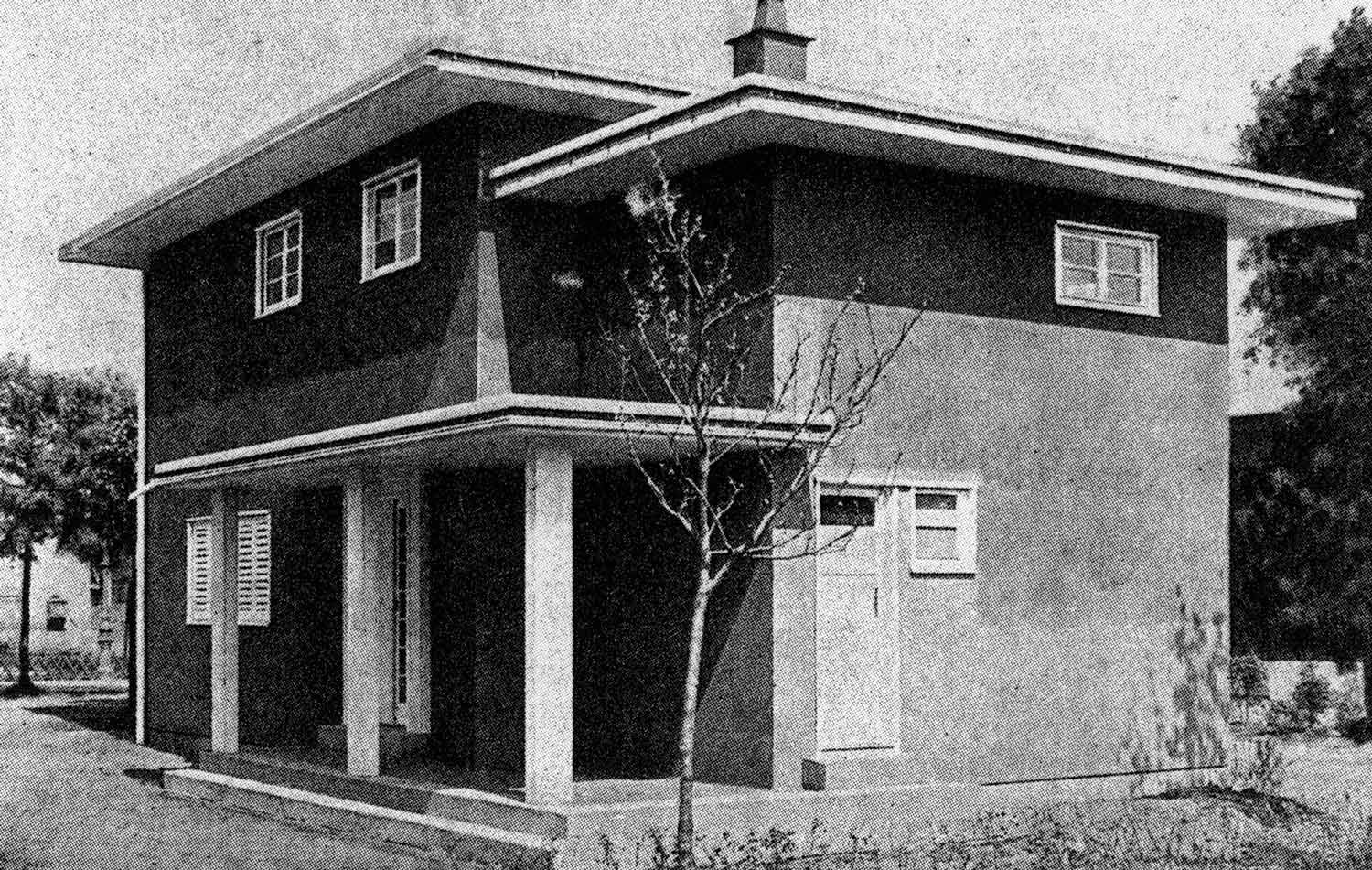Wooden houses in Hellerau
After the First World War, there was a great housing shortage and building materials such as bricks, lime, and cement were scarce. This gave rise to the idea of developing wooden houses made of prefabricated parts that could be erected quickly. The Deutsche Werkstätten (German Workshops) in Hellerau also made a significant contribution and were so successful that a street in Hellerau became an exhibition site with show houses. In the product marketed under the name De-We-Plattenhaus (De-We Panel Construction House), designed by Bruno Paul in 1925 and manufactured by the Deutsche Werkstätten (German Workshops) the elements were extensively simplified and stylised to help lower the selling price of the buildings.

De-We Plattenhaus type H 1018.
Design: Bruno Paul, 1925. Source: Deutsche Werkstätten AG Dresden Hellerau und München (ed.): Werbeschrift DE-WE Plattenhaus. Dresden 1925, unpaginated. Printed by Jakob Hegner in Hellerau.
Prefabricated wooden houses
After the First World War, there was a great housing shortage and building materials such as bricks, lime, and cement were scarce. This gave rise to the idea of developing wooden houses made of prefabricated parts that could be erected quickly. It is not well known that the Deutsche Werkstätten (German Workshops) in Hellerau also made a significant contribution to this. Of the 80 wooden house designs produced between 1921 and 1937, 20 were created in Hellerau alone. In 1920, the Deutsche Werkstätten (German Workshops) prepared to build wooden houses. A first model building attracted great interest and the first eight houses were completed in 1921. In the following years, renowned architects such as Adelbert Niemeyer, Bruno Paul, Hans Poelzig, Richard Riemerschmid, and Heinrich Tessenow designed the buildings.
Show house site in Hellerau
The high number of new orders soon made it necessary to set up their own production line. From 1934 onwards, the Hellerau street Am Sonnenhang with several show houses served as the site for the Die neue Zeit (The New Era) exhibition, which created a wave of international enthusiasm. The houses were advertised as being built by German hands, giving German families a new home. 15 buildings were created for users from the ‘simplest to wealthier backgrounds’. In the product marketed under the name De-We-Plattenhaus (De-We Panel Construction House), designed by Bruno Paul in 1925, the elements were extensively simplified and stylised to help lower the selling price of the buildings. This was important since the buyers had to finance the foundations, sanitary facilities, heating, and electricity in addition to the production and assembly of the prefabricated parts.
Prefabrication with an individual touch
The merit of the Hellerau timber construction concept in German prefabricated house construction between 1920 and 1940 lies in the combination of prefabrication and an individual touch. Although rural building methods were used as inspiration, prefabrication required new types of construction, e.g. a multi-layered wall structure, and the entire building also had to be evenly heatable throughout. The materials used were mostly plain local woods, primarily spruce, which were also used for the finishing and furnishing.
